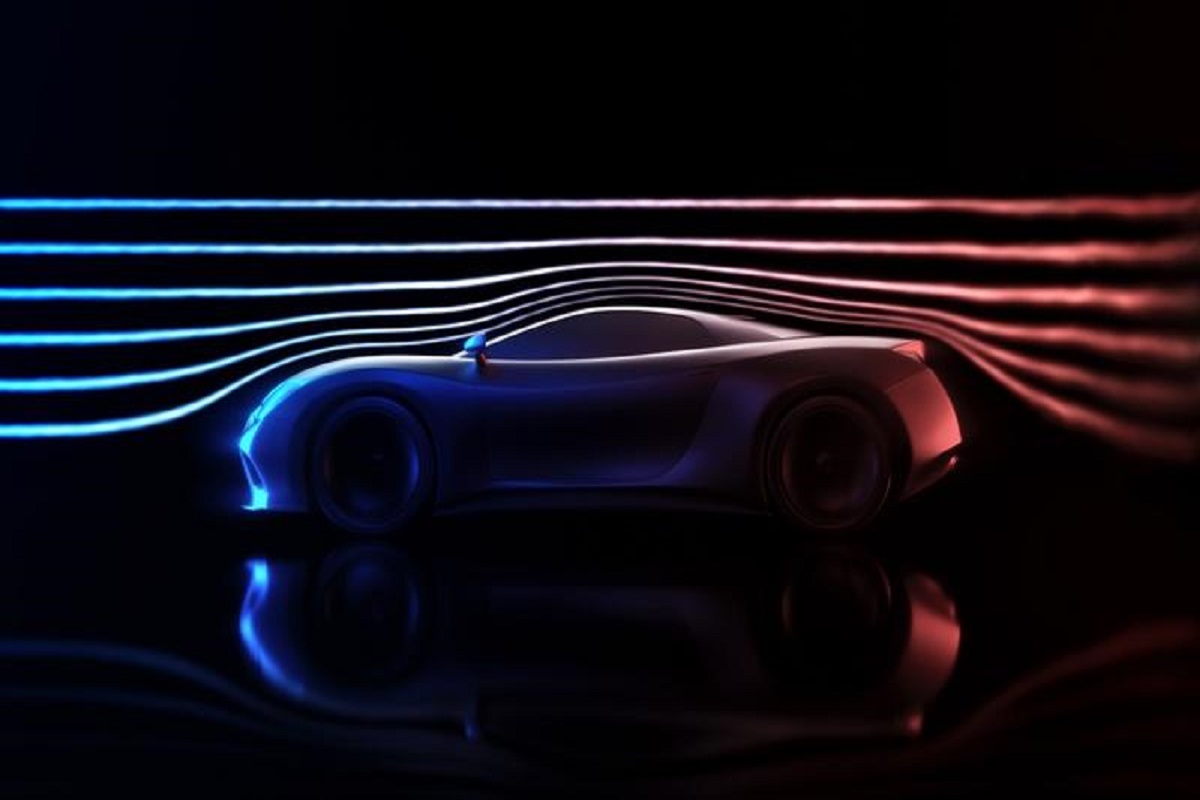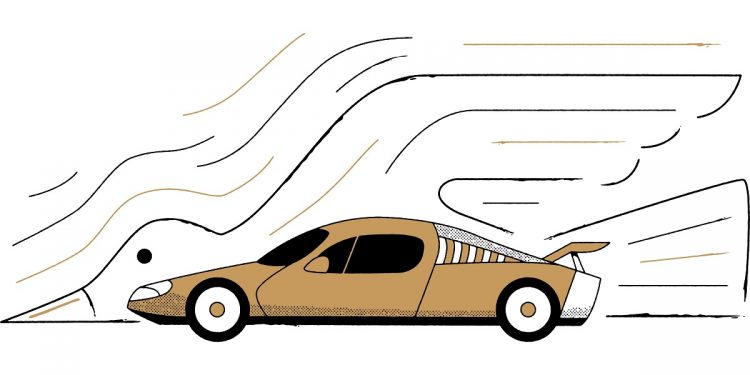NASA defines aerodynamic as the study of forces and the resulting motion of objects through the air. For several decades, cars have been designed with aerodynamics in mind, an aerodynamic car can move through the air surrounding it, easier. Having a car designed with airflow in mind means it has less difficulty accelerating and can achieve better fuel economy numbers because the engine doesn’t have to work nearly as hard to push the car through the air.
Aerodynamics is a way to explain how an object behaves when it moves through the air, or when air moves around it, a good example is how wind affects airplanes and cars. The air that surrounds the car when being driven acts like a wall, at low speeds and when there is little to no wind outside, this air ‘wall’ is hard to tell that it’s there but when you are driving very fast and/or it’s windy, you will find that handling the car is very tricky and the engine would work a lot harder to reach the same speed than when there is no wind.
Engineers have been incorporating aerodynamics in the design of vehicles and that’s why an airplane can fly and not be pulled down on the ground, while a car sticks to the ground and doesn’t lift when we are driving. To understand the reason behind this, we need to look at lift and downforce.
Click To Shop All Body / Aero Kits Here
Lift and Downforce
Bernoulli’s Principle is the principle that keeps aircraft aloft and the one that pushes cars harder into the asphalt eliminating any lift and maximizing grip. It states that ’’Within a horizontal flow of fluid, points of higher speed will have less pressure than points of slower fluid speed’’. Note that air is a fluid. To understand the principle we need to see how the wings of an aircraft keep it in the sky. A wing of an airplane is curved on top and therefore the air on the top of the wing has to travel faster and farther than the air underneath it. That’s the reason why above the wing there is a lower pressure area and below it, there is a higher pressure area. That difference in pressure results in what it’s called ‘Lift’ that keeps the aircraft in the air. Lift is defined as the force that opposes the weight of an object and raises it into the air and keeps it there

Cars, however, need to improve grip. That’s accomplished by using Bernoulli’s effect completely the opposite way airplanes do. A car’s wing is shaped the other way around, so the air deflected underneath it travels at higher speeds and therefore creates a lower pressure area than on top. The force that pushed the car down is called ‘Downforce’ and it results in its better grip. NASA defines downforce as the opposite of lift; the force that presses an object in the direction of the ground.
Engineers have developed several ways of designing a car with airflow in mind, for instance, more rounded designs and shapes on the exterior of the vehicle are crafted to channel air in a way so that it flows around the car with the least resistance possible. Some high-performance cars even have parts that move air smoothly across the underside of the car. Many also include a spoiler (also known as a rear wing) to keep the air from lifting the car’s wheels and making it unstable at high speeds. In most cases, however, bolting a big spoiler on the back of an ordinary car isn’t going to aid in performance, speed, or handling a whole lot. In some cases, it could even create more understeer; or reluctance to corner.
Drag and Aerodynamic Design
Drag is generated when a solid object moves through a fluid medium such as water or air. As an object moves through the atmosphere, it displaces the air that surrounds it. The object is also subjected to gravity and drag. Drag increases with velocity, the faster the object travels, the more drag it experiences.
An object’s motion is measured using the factors described in Newton’s laws. These include mass, velocity, weight, external force, and acceleration. Drag has a direct effect on acceleration. The acceleration (a) of an object is its weight (W) minus drag (D) divided by its mass (m). Remember, weight is an object’s mass times the force of gravity acting on it. Your weight would change on the moon because of lesser gravity, but your mass stays the same. To put it more simply, here’s the formula given by NASA:
a = (W – D) / m
As an object accelerates, its velocity and drag increase, eventually to the point where drag becomes equal to the weight, in which case no further acceleration can occur. Let’s say our object in this equation is a car. This means that as the car travels faster and faster, more and more air pushes against it, limiting how much more it can accelerate and restricting it to a certain speed.
How does all of this apply to car design? Well, it’s useful for figuring out the drag coefficient. This is one of the primary factors that determine how easily an object moves through the air. The drag coefficient (Cd) is equal to the drag (D), divided by the quantity of the density (r), times half the velocity (V) squared times the area (A). To make that more readable:
Cd = D / (A * .5 * r * V^2)
The coefficient of drag (Cd) is a figure that measures the force of air resistance on an object, such as a car. The aerodynamic abilities of a car are measured using the vehicle’s coefficient of drag. Essentially, the lower the Cd, the more aerodynamic a car is, and the easier it can move through the wall of air pushing against it.
When it comes to the design and styling of a car, it is important to know that the smoother, more streamlined shapes are more aerodynamic than boxy ones because smooth, rounded surfaces allow the air to flow in a stream over the vehicle, reducing the “push” of air against the body.

Other Effects of Aerodynamics on Automobiles
Other than in air resistance, here’s how aerodynamics affects the car;
Aerodynamics affects the stability and balance of a vehicle. It can create stable or unstable yaw moments, or shift the effective load balance on the wheels before/after such that the understeer or oversteer characteristics change with different attitudes and or speeds.
Aerodynamics also affects the dispersion of pollutants and particulate matter from the exhaust around the vehicle. The reason the exhaust system is run to the back of the car is so the exhaust gases will not be taken back into the car where they can asphyxiate the passengers. Back in the age of station wagons with back windows that lowered down, these vehicles were typically equipped with a deflector to direct the wind flow down the back of the car to prevent or decrease the amount of exhaust that would re-enter the vehicle from the turbulent flow behind the car.
Aerodynamics also gives cars lift or downforce. Racing cars typically want a large amount of downforce such that they can go around corners faster without slipping sideways due to the increased friction force from the downforce. You want as little lift as possible in a car otherwise you risk turning the car into an uncontrollable flying object.
Aerodynamics also affect a vehicle’s resistance to gusts of wind. Large lorries can be liable to tip over if they are caught by a crosswind and smaller cars can be blown sideways. With aerodynamics there are many trade-offs, increasing downforce tends to increase drag. Reducing susceptibility to cross-winds tends to make your car wider and lower.




